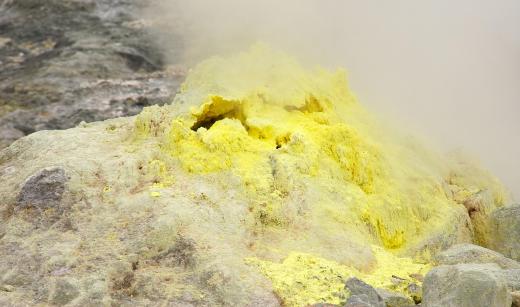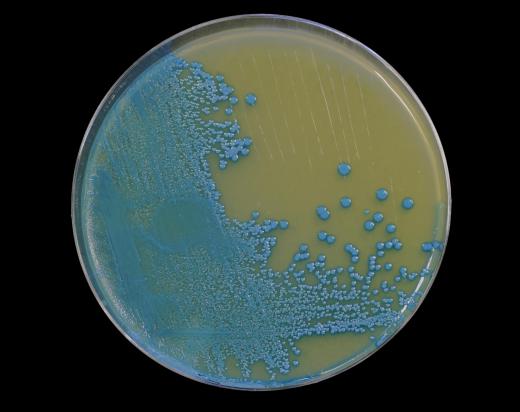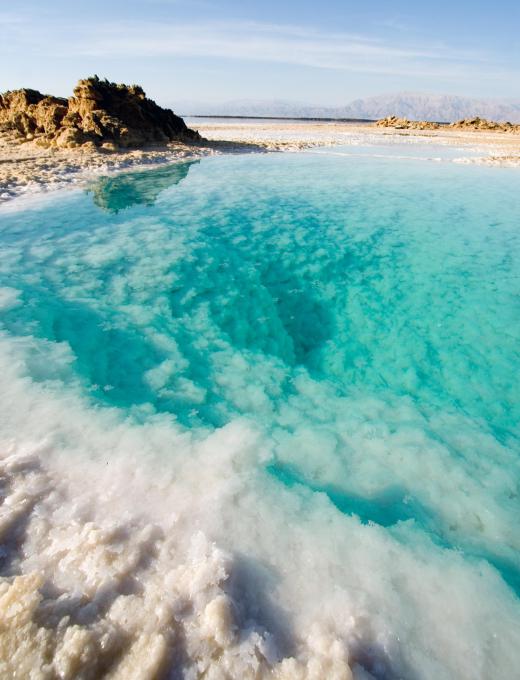What Are the Differences between Archaea and Bacteria?
Archaea and bacteria are both single-celled microorganisms known as prokaryotes but this is one of the few things they have in common. Even though they both look vaguely similar when viewed through a microscope, each represents a completely different group of creatures. In fact, archaea differ from bacteria as much as humans do, in terms of their biochemistry and genetic structure. Archaea and bacteria have different cell membranes and cell structures, and archaea are found in extreme environments where most bacteria could not survive.
Bacteria cell walls contain a substance known as peptidoglycan, while the cell walls of archaea do not. Archaea and bacteria also differ because the cell membranes of archaea have a unique structure and do not contain the same lipids, or fats, that are found in the cell membranes of other organisms. Archaeal membranes contain a substance known as isoprene, which forms heat-resistant structures and is not present in bacterial cell membranes.

Inside archaea, protein-synthesizing molecules called ribosomes are different from those found in bacteria, and are closer to the ribosomes present in eukaryotic cells. Eukaryotic cells are found in humans, animals, plants, fungi and protozoa. The enzyme RNA polymerase, which enables RNA manufacture in cells, has a simple form in bacteria. In archaea, it is more complex.

Archaea and bacteria differ in the environments in which they can survive. While bacteria live almost everywhere, only archaea are capable of surviving in harsh extremes, although they are also found elsewhere. Some archaea, known as thermophiles, live in very hot environments such as volcano vents. Others are able to withstand extremely acidic or alkaline conditions or locations without oxygen. Some very salty places, such as the Dead Sea, are too drying for most organisms, but certain archaea known as halophiles can live there.

Unlike bacteria, which were discovered in the 1600s, archaea only came to light in the 1970s when it was found that certain prokaryotes had a different genetic makeup from bacteria. It was noted that these were also the prokaryotes living in extreme environments, and a new group of lifeforms was recognized. This meant that life could be divided into three main groups, or domains, known as eukaryotes, archaea and bacteria. Some experts think that the ability of archaea to live in inhospitable conditions may be because they are an ancient group of microbes, originally adapted to a time when the earth was hotter and had an atmosphere full of methane and ammonia.
AS FEATURED ON:
AS FEATURED ON:














Discussion Comments
@anon992932-- Yes, archaea were classified under bacteria but it's also true that they were not discovered until the 1970s.
This was when Dr. Carl Woese found that "bacteria" that lived at high temperatures or produced methane clustered together. He named it Archaea.
People knew that archaea existed, it's just that they were classified within bacteria until the 1970s.
I read that both bacteria and archae can survive extremely hostile environments.
@MrsPramm - Well, it's certainly possible, but there is a big argument against it. The archaea are considered to be a fairly ancient life-form, after all, particularly if they evolved back when the Earth's surface was very different.
And they have never got beyond the one celled stage, whereas you only have to look outside to see what creatures with our cells have managed to do. That might be because we've got more area to play with, but I also think there are simply limitations if you've got a hostile environment. And the surface of Venus is much more hostile than anything we've got on Earth.
It's incredible, when you think about it, that life can survive in such extreme conditions. It's one of the things that makes me wonder if we will ever discover life on an alien planet that has evolved in a completely different way from us.
Most of the time people kind of assume that if we find life it's going to be on a water planet, with oxygen or something similar, like we have here. But, even here there are creatures which can live in the depths of volcanoes and in water so salty it would kill ordinary life. We've got whole ecosystems based around vents so deep underwater that they never get the barest glimpse of sunlight.
So, maybe it's possible that there is life on, say, Venus or one of the moons of Jupiter. It won't be life as we know it, but that's OK.
Post your comments